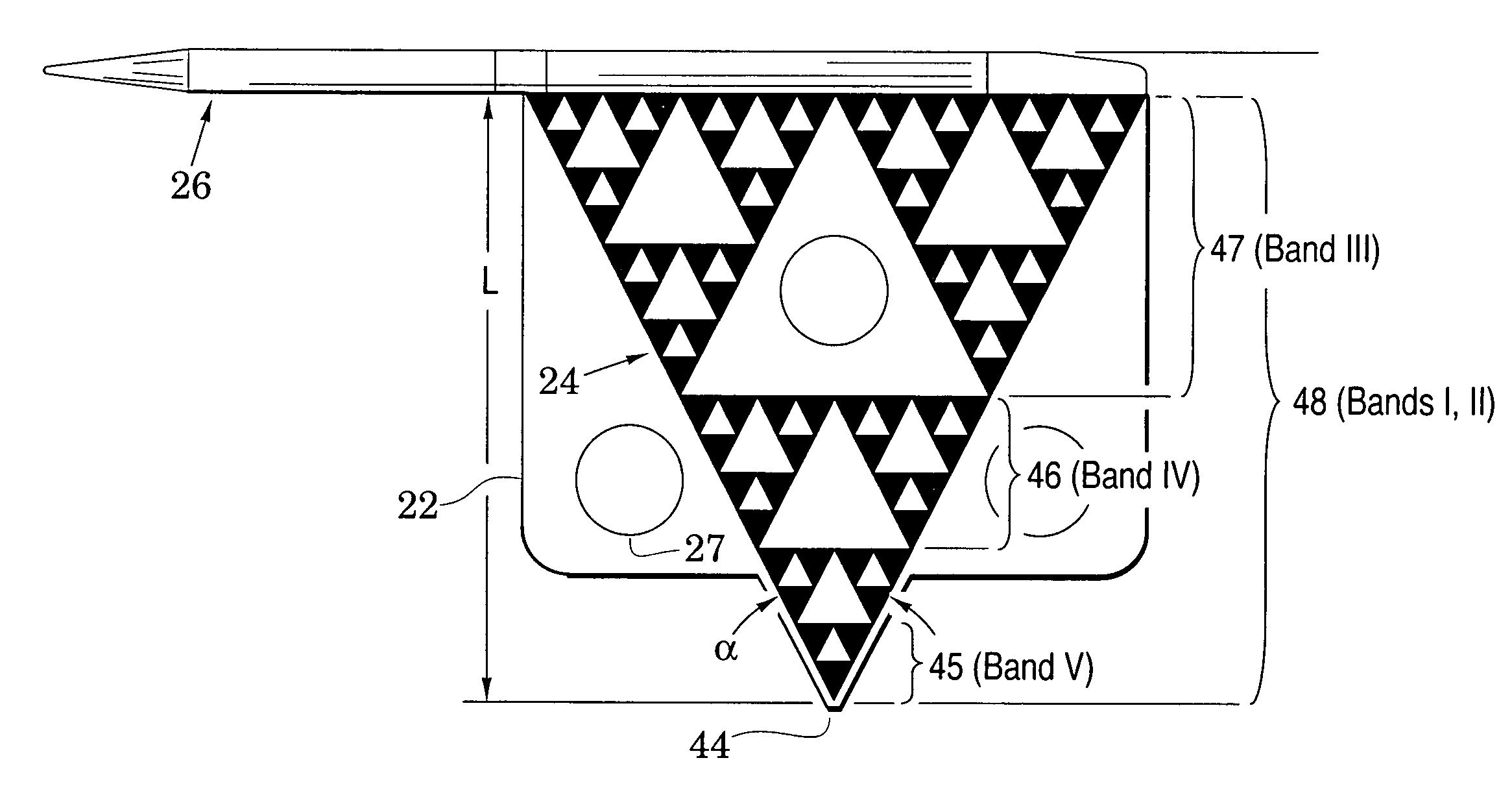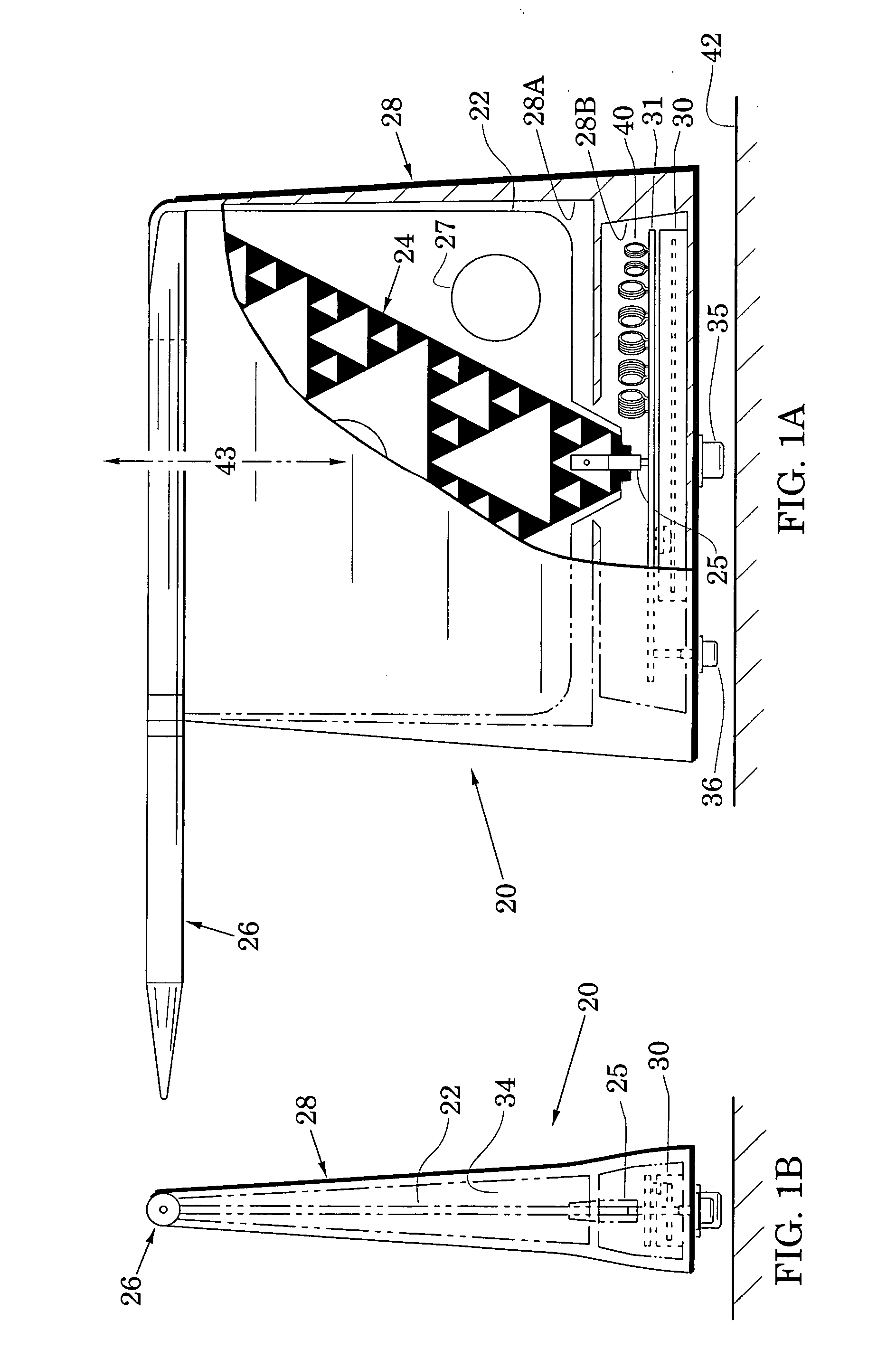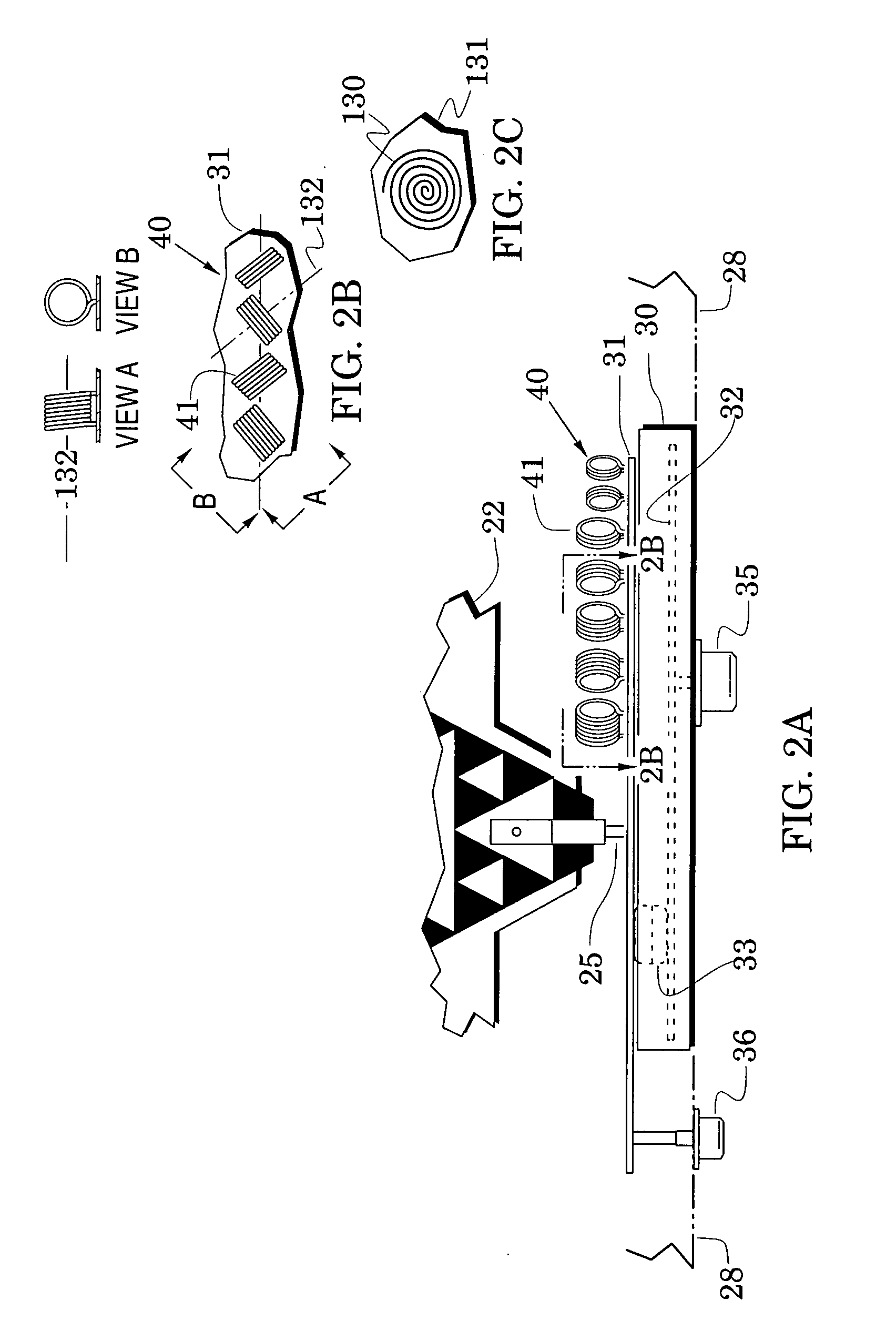Compact top-loaded, tunable fractal antenna systems for efficient ultrabroadband aircraft operation
a fractal antenna and aircraft technology, applied in the direction of resonant antennas, elongated active elements, radiating element structural forms, etc., can solve the problems of conflicting requirements between ultrabroadband antenna systems and providing antennas for these systems, and the design problem of difficult to solv
- Summary
- Abstract
- Description
- Claims
- Application Information
AI Technical Summary
Problems solved by technology
Method used
Image
Examples
embodiment 20
[0024]In particular, FIGS. 1A and 1B illustrate a top-loaded, fractal monopole antenna system embodiment 20 which includes a dielectric substrate 22 that carries a conductive fractal member 24. The fractal member is electrically coupled at a first lower end to a coaxial fitting 25 and at a second upper end to a top load 26. It is noted that a dielectric is a structure in which an electric field can be maintained with a minimum loss of power because the structure (e.g., a polymer sheet) has little ability (or an absence of ability) to conduct electricity. The substrate 22, therefore, has minimal effect on operation of the system 20.
[0025]As illustrated in FIGS. 1A and 1B, the top load 26 is aerodynamically shaped. In addition to its electrical connection to the fractal member 24, the top load may be mechanically coupled to the substrate 22 and is preferably supported by an aerodynamic blade-shaped radome enclosure 28 (formed, for example, of fiberglass). Internally, this protective e...
embodiment 60
[0041]The enhanced radiation efficiency and gain of the system 20 can be advantageously applied to a variety of airborne applications. For example, FIG. 6 shows that a system embodiment 60 can be used to effectively interface with a transceiver 61 via added system structures of a low-band matching circuit 62, the selectable inductor chain 40, and selectable mid and upper band matching circuits 64 that are all coupled between the antenna apex 44 and the transceiver 60 with the aid of a diplexer 65. Selection of the mid and upper band matching circuits and of inductors of the inductor chain 40 is realized with a controller 66 which receives commands 67 from the transceiver and which may be augmented by a memory (e.g., a look-up table 68). The controller 66 may be realized with conventional electronics (e.g., a gate array or an appropriately-programmed microcontroller) and selections of the controller may be facilitated with controlled switching elements such as PIN diodes 69. Processe...
embodiment 80
[0044]This is illustrated with aid of FIG. 8 which illustrates an antenna system embodiment 80 that includes elements of the system 60 of FIG. 6 with like elements indicated by like reference numbers. FIG. 8 shows detailed embodiments of the tuning inductor chain 40, the low band matching circuit 62, and the selectable mid and upper band matching circuits 64 (an arrow 65A in FIG. 8 also shows that the diplexer 65 can be realized with high-pass and low-pass circuits).
[0045]In particular, the matching circuits 64 includes impedance-matching circuits 83, 84, 85 and 86 which may each be selected with diodes 69 that are switched on and off by band bits 81 of commands issued by the controller (66 in FIG. 6). Impedance-matching circuit 83, for example, is switched between the antenna apex 44 and the transceiver 61 to process signals in the frequency band II of FIG. 7A. Impedance-matching circuit 84 is switched between the antenna apex 44 and the transceiver to process signals in frequency ...
PUM
 Login to View More
Login to View More Abstract
Description
Claims
Application Information
 Login to View More
Login to View More - R&D
- Intellectual Property
- Life Sciences
- Materials
- Tech Scout
- Unparalleled Data Quality
- Higher Quality Content
- 60% Fewer Hallucinations
Browse by: Latest US Patents, China's latest patents, Technical Efficacy Thesaurus, Application Domain, Technology Topic, Popular Technical Reports.
© 2025 PatSnap. All rights reserved.Legal|Privacy policy|Modern Slavery Act Transparency Statement|Sitemap|About US| Contact US: help@patsnap.com



